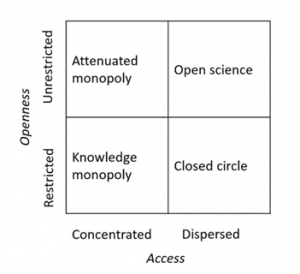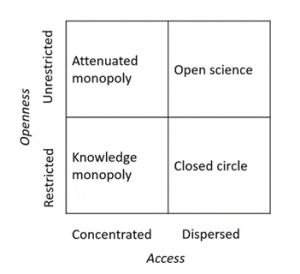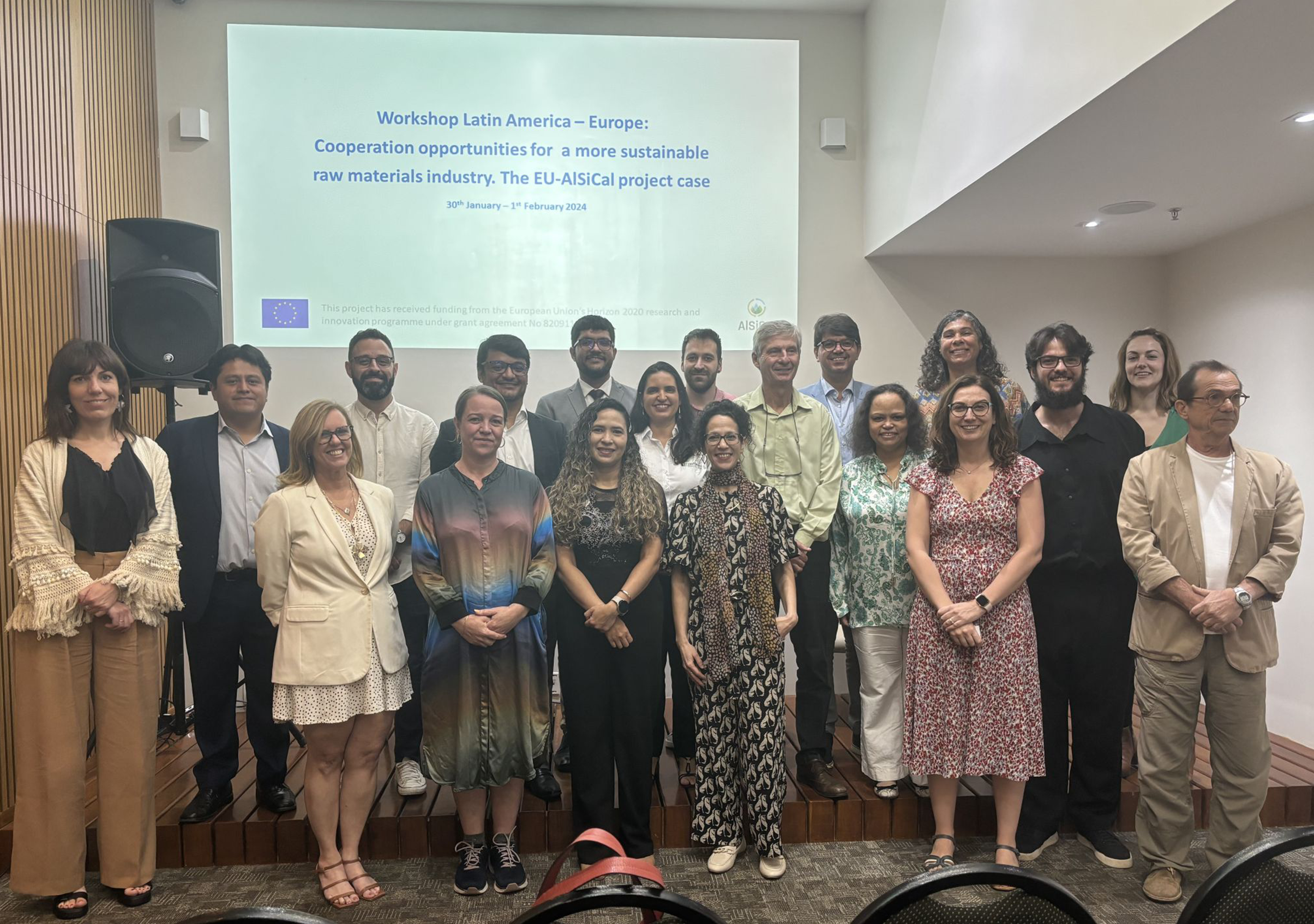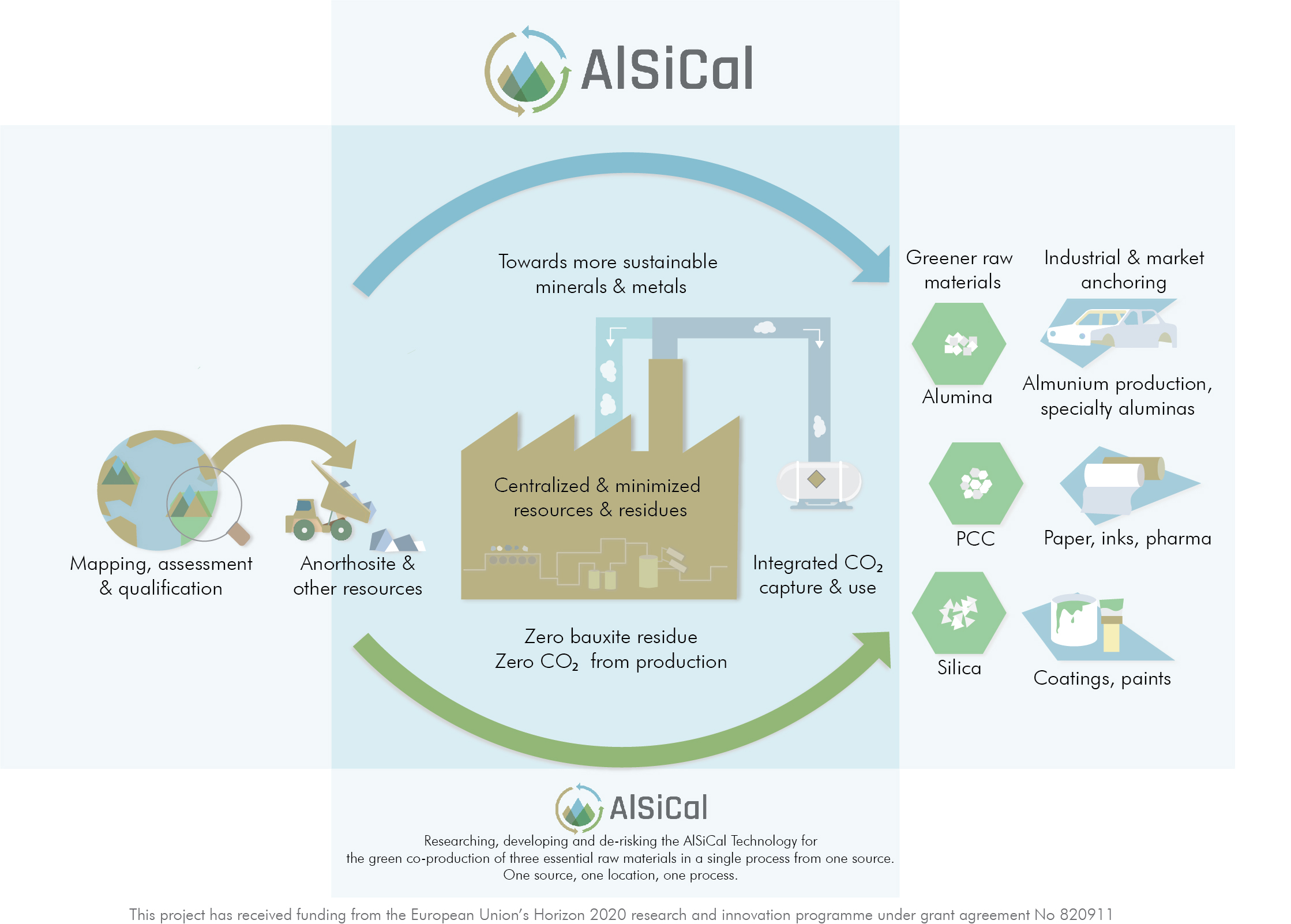
20 Oct 2021 / News
The circular economy, openness, and dispersed access to research results – the AlSiCal case study
Transition to a Circular Economy
The transition to a circular economy will require innovation throughout society. The Research Handbook of Innovation for a Circular Economy examines the urgent need for radical innovation to develop processes and frameworks that contribute to a circular economy.
The application of a novel method[1] for managing access and openness is analyzed by using the AlSiCal Horizon 2020 project consortium agreement as an example. This information can be used to guide governments and policy makers towards a collaborative research framework where openness and access can contribute towards circular economy solutions.
Openness and Access
The conceptual model developed by Egelie et al. describes the distinction between openness and access in the “open-access” term. To understand the model it is important to define these two terms. Openness refers to whether research results are restricted or unrestricted. Restricted results are confidential, while unrestricted results refers to those results that have been published. Access can be dispersed or concentrated, where dispersed access is subject to non-exclusive licensing, where entities are free to exploit the given intellectual property. Concentrated access refers to licensed technology, such as patented technology.
Using these four terms the conceptual model is described in Figure 1 as 4 specific quadrants: Attenuated monopoly, knowledge monopoly, open science, and closed circle. Each quadrant is a combination of these two terms: openness and access.

Figure 1. Conceptual model
The model can be used to study the behavior of collaborative projects. For a given research project, openness would describe the absence of confidentiality rules and the opportunity to publish results. This model can be used by policy makers and research managers to determine where openness and access can benefit the commercialization of research results. Furthermore, it can bring some light into the ethic nature of research funding and how some results financed by public funds are not open or accessible.
The AlSiCal Consortium- a Case Study
The AlSiCal project has been used by the authors of this book chapter as a case study for the use of this conceptual model to analyze the consortium agreement. In this case there are 16 partners from 9 different countries, 4 are universities, 3 are research institutes, 2 are industry associations, and 7 are commercial firms. Because of confidentiality clauses the openness is restricted, but non-disclosure clauses ensure a free flow of knowledge between the parties.
Therefore, the consortium for the AlSiCal project can be placed within the “Closed Circle” quadrant with some movement towards the “Open Science” quadrant indicating the consortium agreement that has decided to make the project results available to the public without restrictions, as seen in Figure 2.

Figure 2. The AlSiCal project consortium in the conceptual model
From Closed Circle to Circular Economy
The authors argue that since AlSiCal is an innovative research project which challenges the current Aluminum production process, it can benefit from closed circle-project development. The disruptive nature of the project, finding an alternative production processes to the Bayer process established in 1888, can benefit from closed circle access together with unrestricted access in the consortium to ensure that collaboration is possible inside the project consortium. This, together with the move towards open-science after the development phase can foster a new technological ecosystem.
For the benefit of the public from research results, openness can be more important than access. If the results are available and published, the innovation can be used to support a move towards a more circular economy. The AlSiCal move towards unrestricted openness will ensure that the process can be adopted. In the case of knowledge monopolies government bodies could interfere if a needed technology is unavailable for a critical circular economy.
The AlSiCal consortium can be used to illustrate some of the issues related to innovation for a circular economy. Normally, a closed circle of knowledge is necessary to develop the innovation. However, after some time, it is imperative to move towards an period where knowledge and solutions are open for sharing and patents are licensed on equal terms to all. This can guide the development of innovations, both for partners and society in the move towards a more circular economy.
More information
Are you interested in the specifics and details of the AlSiCal case study for innovation development? You can read everything in the book chapter The circular economy, openness, and dispersed access to research results, written by Haakon Thue Lie (Dehns and Norwegian University of Technology and Science, NTNU), Knut Jørgen Egelie (NTNU TTO), Christoph Grimpe (Copenhagen Business School) and Roger Sørheim (NTNU) in the book The Research Handbook of Innovation for a Circular Economy.
[1] (Egelie, Lie, Grimpe & Sørheim, 2019)


 This project has received funding from the European Union’s Horizon 2020 research and innovation programme under grant agreement No 820911
This project has received funding from the European Union’s Horizon 2020 research and innovation programme under grant agreement No 820911